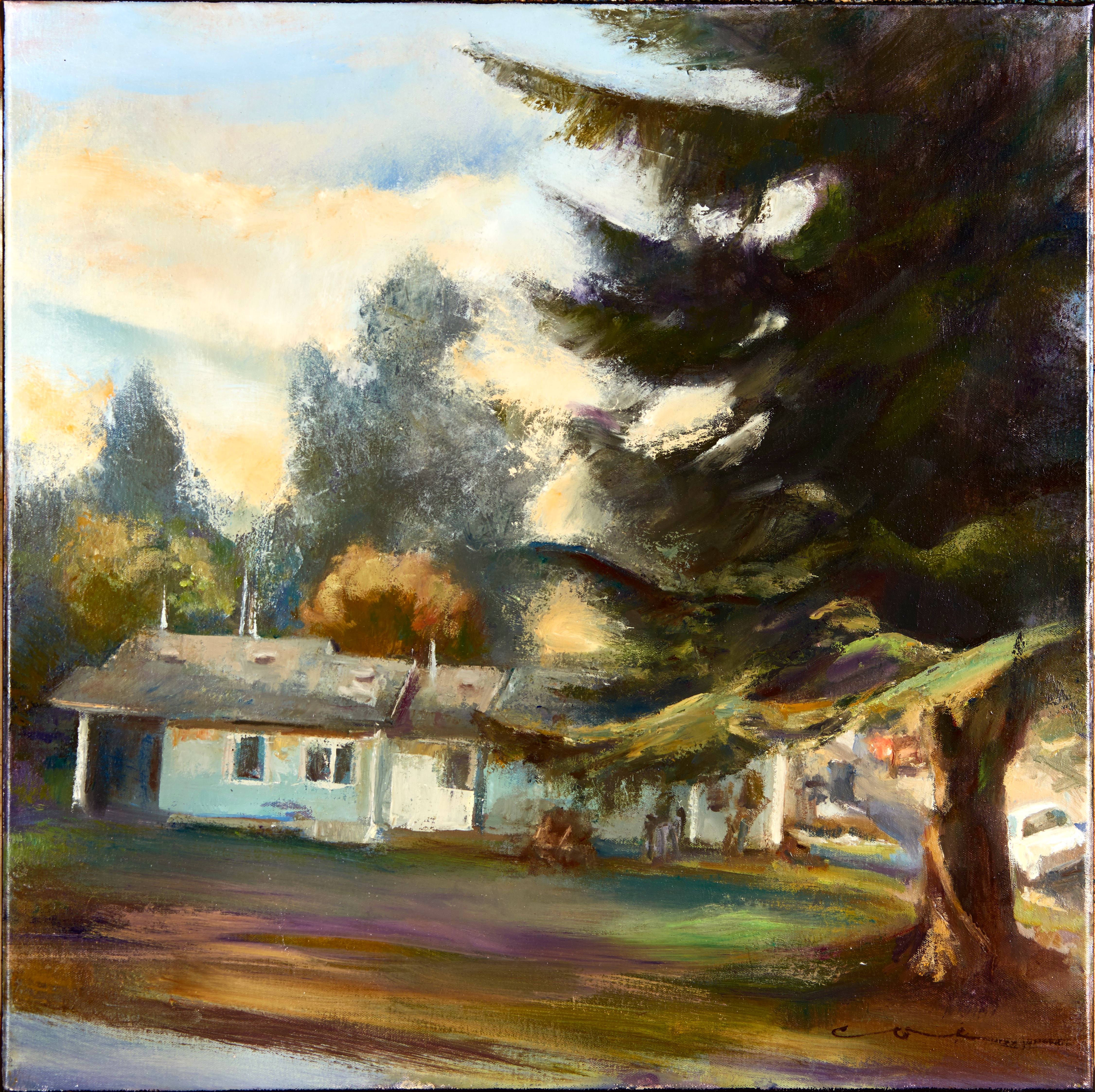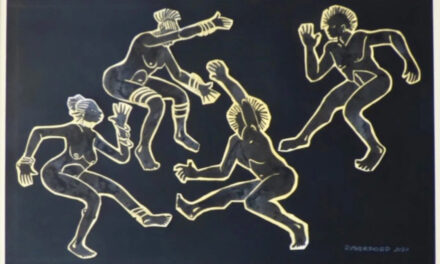(Above: One of Jenny Gray’s large abstract paintings, titled Reach)
By Randi Bjornstad
Eugene artist Jenny Gray says she’s been a graphic designer most of her career, but she’s been an artist all of her life.
“In school, my favorite classes were always art,” Gray recalls. “My mom and my stepdad were artists and photographers. But my father said I needed to do something to make money, so I took the happy medium and did design.”
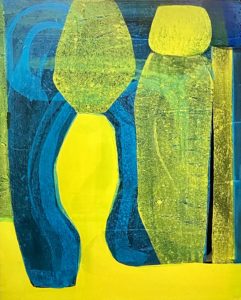
Stand Tall is the title of this Jenny Gray painting
That’s probably why “those principles creep in here and there” in her fine artwork, Gray says. Her abstracts often include strong, well-defined shapes and blocks of color, sometimes vivid, sometimes muted, that incorprate a distinct blend of the overlap between her two areas of talent.
She grew up in southern California, where she lived for a time on a boat.
“My father was an avid sailboat racer, but he couldn’t afford both a house and a boat, so he chose the boat,” she says. After high school, she attended community college in Orange County, then graduated from San Jose State University.
A few years later — 25 years ago now — “I moved to Oregon for all the usual reasons, traffic and prices,” she says, but the decision also included a job opportunity for her now-husband, a structural engineer who has worked on many projects in the area, including the Wildish Community Theater in downtown Springfield.
Her first job in Eugene was doing design for software manuals, particularly Dynamix, a video game company that had its start in Eugene. Later, she worked for Oslund Design.
She thinks her approach to her abstract paintings goes back to a stint when she and her husband lived in the semi-rural community of Monroe.
“That was when I started abstracting landscapes and old barns and outbuildings,” Gray says. “I would start out with the object and then obscure or emphasize certain parts of the painting. Now I think of shapes relating to each other like people do — more like figures or beings of some sort.”
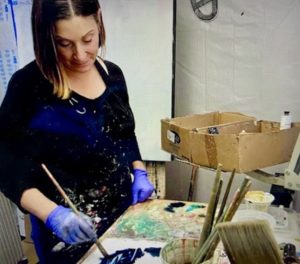
Jenny Gray in her studio
She usually tries to start with an idea, “but that works about 50 percent of the time and then it becomes intuitive and transforms, depending on what is happening on the canvas.”
Nonetheless, Gray’s work is influenced by what goes on in the country and the world.
“The smoke and fires of last summer definitely came into my work,” she says. Those memories take the form of what seem to be the atmosphere of clouds and haze.
Her recent work also has been influenced by living near downtown Eugene, as she finds herself drawing on shapes that evoke the tents and tarps of the homeless encampments.
“The homelessness issue definitely has been coming into it, the struggles of people, “she says. “I think it has been showing in the relationships between shapes, sometimes one appearing to help another.”
She’s changed her painting methods recently also, switching from slow-drying oils that take up space in her new, smaller studio in favor of faster-drying acrylics that seem to deepen in color as they dry, resulting in more of a crisp design feel.
“The light in my studio now is not as much natural light as before, and I can’t mix acrylics the way I can oils, so my work has become a bit more graphic lately.”
As with everyone else’s, Gray’s artistic life has changed since the beginning of the coronavirus pandemic.
“Since most of the galleries have shut down, I have been selling most of my work online, through Saatchi and Singulart and Etsy, where I have been for a long time. And I sell prints of my work online at graysmodern.com, which has kind of taken off since the pandemic,” she says. “I also have shown some things at Maude Kerns Art Center and Oregon Art Supply.”
In fact, she’s part of an annual show on display through April at Oregon Art Supply that features the work of several women who create according to a theme.
Last year’s theme was “Red.” This year, it is “nine = one,” meaning that each artist — Zoe Cohen, Jenny Gray, Ann Bumb Hamilton, Rebecca Mannheimer, and Beth Robinson — has created nine 8-inch square art pieces that stand alone but placed together in a large 24-inch square also make a cohesive overall piece of art.
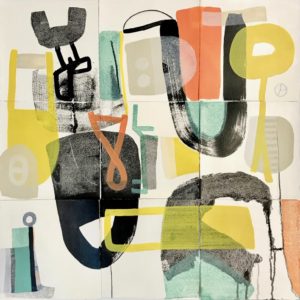
Jenny Gray created this painting for a show at Oregon Art Supply of work by several women artists; each created nine squares of standalone work that combined resulted in one large cohesive piece.
“I started out by having all the small squares together in the large square shape to figure out a basic structure,” Gray says. Then she took them all apart and worked on each one separately before putting them back together again to view the whole.
“It was a hard challenge,” she acknowledges. “I don’t really love it. I don’t usually work that way, of course, and mine seemed to get rather ‘busy’ when I put it all together. But I do find I can look at it for a long time and still see new things in it.”
In a way, it reflects the way life has changed so dramatically in such a short time, she says philosophically.
“We’ve all had to pivot to different ways of doing almost everything,” Gray says. “Art is no exception.”
About Jenny Gray
See work:
- graysmodern.com;
- saatchiart.com/all?query=jenny gray;
- singulart.com/en/artist/jenny-gray-14811;
- etsy.com/market/jenny_gray_art
Current Show: Nine = One, at Oregon Art Supply, 1020 Pearl St., Eugene, through April; featuring work by Zoe Cohen, Jenny Gray, Ann Bumb Hamilton, Rebecca Mannheimer, and Beth Robinson
Contact: jg@jennygrayart.com


